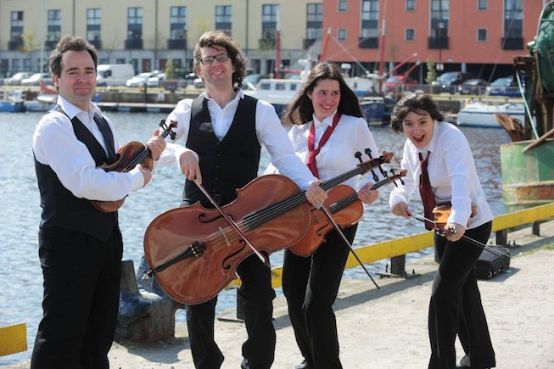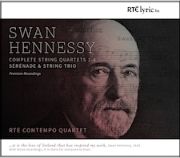Unknown guest on Lake Geneva
Irish descent, American citizenship, German training, influenced by Schumann and at home in Switzerland for many years: this CD introduces Swan Hennessy.

Some famous composers - Brahms, Stravinsky, Wagner and Liszt come to mind - were inspired to write important works by longer or shorter stays in Switzerland. Not so the Paris-based American composer Swan Hennessy, who lived in Veytaux on Lake Geneva from 1915 to 1919 due to the war. For unknown reasons, he did not compose a single work during these five years.
Hennessy's work has only been increasingly recognized in recent years. Born in Illinois in the USA in 1866 as the son of an Irish emigrant, he studied in Stuttgart. It is no wonder that his early compositions were influenced by German music, especially Schumann. His move to Paris coincided with a turn towards musical impressionism and the music of Debussy and Ravel, and from 1900 onwards he also developed an interest in Irish and Celtic music.
Works "in the Irish style" make up an important part of Hennessy's oeuvre, which grew to over 80 works with opus numbers by the time of his death in 1929. His oeuvre is devoted exclusively to piano, vocal and chamber music. His compositions were very well received throughout Europe, but especially in Ireland. Unlike other composers, Hennessy did not work with quotations from Irish folk music, but rather appropriated its melodic and rhythmic characteristics.
The initiative to record a CD of Swan Hennessy's complete string quartets and string trio is highly commendable. Released under the label of the Irish radio station RTÉ and performed by the excellent RTÉ Contempo Quartet, this recording helps to arouse interest in a completely forgotten composer. The members of the string quartet, who are a joy to listen to, have known each other since their school days in Bucharest. The ensemble has been based in Galway, Ireland, for many years and has made a name for itself with performances of traditional repertoire as well as world premieres of contemporary Irish music.
Particularly moving is Hennessy's second quartet op. 49 from 1920, which is intended to commemorate Terence MacSwiney, the Lord Mayor of Cork, who died in an English prison in the same year after a hunger strike and thus became a martyr of the Irish independence movement.
The fact that Hennessy was no friend of atonal music and the avant-garde in general can be heard in his compositions. His aim was to create pan-Celtic music that drew on the traditions of Ireland, Scotland and Brittany. His string quartets, which are imbued with a mild melancholy and lack extreme dynamic contrasts and exaggerated emotions, are good examples of this. The RTÉ Contempo Quartet captures their tone perfectly and convinces with nuanced and beautiful interpretations.
Swan Hennessy: Complete String Quartets 1-4, Sérénade & String Trio. RTÉ Contempo Quartet (Bogdan Sofei and Ingrid Nicola, violins ; Andreea Banciu, viola; Adrian Mantu, cello). RTÉ lyric fm CD 159








